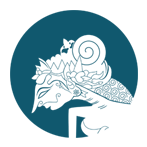Phytochemical, Antimicrobial and Cytotoxic Activities of Strophanthus sarmentosus DC
Abstract
Strophanthus sarmentosus DC is used traditionally in the management of snake-bite, arthritis, eye infection, rheumatism, emetic and venereal diseases. Freshly collected mature Strophanthus sarmentosus plant parts were air-dried at room temperature. Each of the plant parts (leaf, stem and roots) was successively extracted by cold extraction method using hexane, ethyl acetate and methanol respectively. The crude extracts were subjected to phytochemical, antimicrobial and cytotoxicity analysis by employing chemical tests, agar diffusion and brine shrimps methods.
The phytochemical screening showed the presence of tannins, saponins, glycosides, flavonoids, phenols, steroids, terpenoids and carbohydrates in all the extracts. The extracts demonstrated broad spectrum activities against both gram- positive and gram-negative bacteria and the fungi tested. The MIC and MMC of ethyl acetate and methanol extracts of the S. sarmentosus (stem) is between 0.3 and 5.0 mg/mL. The cytotoxic activity (LC50) of the S. sarmentosus extracts (leaf, stem and root) ranged between 117 µg/mL and 270 µg/mL, showing that the extracts are within the medium toxic level according to Clarkson’s toxicity index.
Keywords
Full Text:
PDFReferences
References
Agbaje, E.O., & Ajidahun, O.A. (2011). Analgesic, anti-inflammatory and antipyretic effects of dried root ethanolic extract of Strophanthus sarmentosus Dc (Apocynaceae). Int. Res. J. Pharm. Pharmacol. 1(4): 062-069.
Alalor, C.A., Igwilo, C.I., & Jeroh, E. (2012). Evaluation of the antibacterial properties of aqueous and methanol extracts of Cassia alata. J. Pharm. And Allied Health Sci. 2(2): 40-46.
Apu, A.S., Bhuyan, S.H., Khatun, F., Lisa, M.S., Matin, M., & Hossain, M.F. (2012). Assessment of Cytotoxic activity of two medicinal plants using Brine Shrimp (Artemia salina) as an experimental tool. International Journal Pharmaceutical Science Res. 4(3), 1125-1130.
Behidj-Benyounes, N., Bennaamane, S., Zohra Bissaad, F., Chebouti, N., Mohandkaci, H., Abdalaziz, N., & Iddou, S. (2014). Antimicrobial Potentials of Flavonoids Isolated from Tagetes erecta. International Journal of Biological, Biomolecular, Agricultural, Food and Biotechnological Engineering, 8.11: 1270–1273.
Clarkson, C., Maharaj, V.J., Crouch, N.R., Olwen, M.G., Pillay, P., Matsabisa, M.G., Bhagwandin, N., Smith, P.J., & Folb, P.I. (2004). In vitro antiplasmodial activity of medicinal plants native to or naturalized in South Afric. Journal of ethnopharmacology, 92, 177-191.
Fabry, W., Okemo, P.O., & Ansorg, R. (1998), Antibacterial activity of East African medicinal plants. Journal of Ethnopharmacology. 60(1): 79–84.
Falodun, A., Okunrobe, L.O., & Uzoamaka, N. (2006). Phytochemical screening and anti-inflammatory evaluation of methanolic and aqueous extracts of Euphorbia heterophylla Linn. (Euphorbiaceae). African Journal of Biotechnology, 5(6):529-531
Frempong, T.F., Badu, M., Boamah, V.E., Amponsah, I.K., Agbemade, B., Boateng, R.A., & Boadi, N.O. (2021). Phenolic Content, Antioxidant Properties and Antimicrobial Activities of the Extracts from Funtumia africana and Funtumia elastica. Chemistry Africa, 4 (3), 503-512.
Hetty Manurung, R.A., Nugroho, R.A., Puspita Sari, Y., & Chernovita, R.A. (2019). Phytochemical analysis and antioxidant activity of leaves extracts of endemic plant jahe balikpapan (etlingera balikpapanensis A.D. Poulsen). International Journal of Scientific & Technology Research, vol. 8(9),
Karkare, S., Adou, E., Cao, S., Brodie, P., Miller, J.S., Andrianjafy, N.M., Razafitsalama, J., Andriantsiferana, R., Rasamison, V. E., & Kingston, D.G. I. (2007). Journal of Natural Products, 70(11), 1766-1770.
Krishnaraju, A.V., Rao, T.V.N., Sundaraju, D., Vanisree, M., Tsay, H., Subbaraju, G.V. (2005). Assessment of bioactivity of Indian medicinalplants using Brine Shrimps (Artemia salina) lethality assay. International Journal of Applied Science Engineering, 3. 125-134.
Labiad, M., Harhar, H., Ghanimi, A., & Tabyaoui, M. (2017). Phytochemical screening and antioxidant activity of Moroccan thymus satureioides extracts. Journal of Materials and Environmental Sciences. 8(6), 2132-2139.
Meyer, B.N., Ferrigni, N.R., Putnam, J.E., Jacobsen, L.B., Nichols, D.E., & McLaughlin, J.L. (1982). Brine Shrimp: A Convenient General Bioassay for Active Plant Constituents. Plant Medica, 45, 31-34.
Onotu, C.S., Abedo, J.A., Anchura, R.G., Shettima, F.A.T., Abdulmalik, U., & Sambo, F. (2014). In vivo antitrypanosomal activity of methanolic stem extract of Strophanthus sarmentosus dc on wistar white mice infected with Trypanosoma brucei brucei (federe strain). Adv. Life Sci.Tech, 16: 11-15.
Osamudiamen, P.M., Aiyelaagbe, O.O., Vaid, S., Sangwan, P.L., Ogbesejana, A.B., & Saxen, A.K. (2020). Comparative in-vitro anticancer and brine shrimp cytotoxic activities of Mezoneuron benthamianum Baill. Journal of Medicinal Plants for Economic Development, 4(1), 1-5.
Palanichamy, S., & Nagarajan, S. (1990). Antifungal activity of Cassia alata leaf extract. J. ethnopharmacol. 29(3): 337-340.
Rahmani, A.H., & Aly, S.M., (2015). Nigella Sativa And Its Active Constituents Thymoquinone Shows Pivotal Role In The Diseases Prevention And Treatment. Asian Journal of Pharmaceutical and Clinical Research, 8.1:
Shabbir, M.K., Nadeem, R., Mukhtar, H., Anwar, F., Mumtaz, M.W. (2009). Physico chemical analysis and determination of various chemical constituents of essential oil in Rosa centifolia. Pakistan Journal of Botany, 41.2: 615–620.
Shanmugam, K., Holmquist, L., Steele, M., Stuchbury, G., Berbaum, K., Schulz, O., BenaventeGarc´?a, O., Castillo, J., Burnell, J., Garcia Rivas, V., Dobson, G., & M¨unch, G. (2008). Plant-derived polyphenols attenuate lipopolysaccharide induced nitric oxide and tumour necrosis fact production in murine microglia intoxification in rats. Journal of Ethnopharmacology, 66: 355-361.
Singh, B., & Bhat, T.K. (2003). Potential therapeutic applications of some antinutritional plant secondary metabolites. Journal Agric. Food Chem. 51: 5579-5597
Singh, I., & Singh, V.P. (2000). Antifungal properties of aqueous and organic solution extracts of seed plants against Aspergillus flavus and A. niger. Phytomorphol. 50: 151-157.
Taiwo, O.M., Olaoluwa O.O., Aiyelaagbe, O.O., & Matasyoh, J.C. (2022). Phytochemical constituents of F. Sagittifolia Warburg ex Mildbraed & Burret leaves with antimicrobial activity. Biology, Medicine, & Natural Product Chemistry, 11(1), 75-81.
Trease, G.E., Evans, W.C., & Evans, D. (2009). Trease and Evans pharmacognosy (16th ed.). Edinburgh; New York: Saunders/Elsevier.
DOI: https://doi.org/10.14421/biomedich.2023.121.119-126
Refbacks
- There are currently no refbacks.
Copyright (c) 2023 Julius Leke Abiola, Olapeju Oluyemisi Aiyelaagbe
Biology, Medicine, & Natural Product Chemistry |




